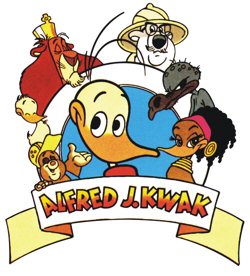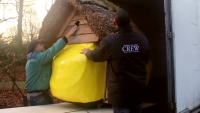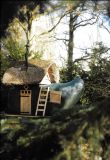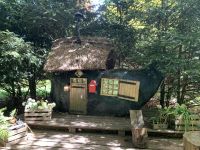De Paltz estate: Difference between revisions
| Line 55: | Line 55: | ||
At the highest point of the estate is the villa. A white-plastered house built in 1867 in [[wikipedia:Eclecticism in architecture|Eclectic style]]. It was originally builty with two floors and a minor attic, but this attic was expanded to a full third floor after the [[wikipedia:World War II|second World War]] on the middle section of the house. Between 1990 and 2012 the house suffered from decay, but has been restored in 2015 by [[Herman van Veen]].<ref name="Heerlijkheid p102" /><ref name="Artscenter" /> | At the highest point of the estate is the villa. A white-plastered house built in 1867 in [[wikipedia:Eclecticism in architecture|Eclectic style]]. It was originally builty with two floors and a minor attic, but this attic was expanded to a full third floor after the [[wikipedia:World War II|second World War]] on the middle section of the house. Between 1990 and 2012 the house suffered from decay, but has been restored in 2015 by [[Herman van Veen]].<ref name="Heerlijkheid p102" /><ref name="Artscenter" /> | ||
[[File:Een heerlijkheid p276-277.jpg|800px]] | [[File:Een heerlijkheid p276-277.jpg|800px]] | ||
Revision as of 23:47, 22 September 2025
| De Paltz | |
|---|---|
| Nature reserve | |
General information | |
| Country | The Netherlands |
| Location | Utrecht province |
| Closest city | Soest |
| Opened | 1860 |
| Current inhabitant | Herman van Veen |
| Management | Het Utrechts Landschap |
| Coordinates | 52° 9′ NB, 5° 16′ OL |
| Size | 77 hectare |
De Paltz estate is a country estate with grounds and a nature reserve between Soesterberg and Soestduinen in the municipality of Soest, in Utrecht province. Its surface is 77 hectare and the park includes avenues, a carriage house, a waterfall, a guest residence and the villa which houses the bulk of the Herman van Veen Arts Center. The estate was bought by Herman van Veen in 2015. There is also a green duck-sized version of Alfred Jodocus Kwak's clog house.
The park is open all days of the week from 8:00 to 18:00, and the Herman van Veen Arts Center Gallery and Gallery Café is open from Tuesday through Sunday from 10:00 to 17:00. The estate hosts a variety of expositions, theater and musical performances (both outside and inside), lectures, guided tours and walks. The grounds are a protected area.
History
On the 18th of December 1823 Andries de Wilde bought the Pijnenburg estate for ƒ 24.800,--, which included some of the area De Paltz was originally part of. He bought other pieces that would become De Paltz on November 11 1836 from major landowner, and mayor of Zeist, Frans Nicolaas van Bern. De Wilde started auctioning his estate on June 15 1860, while he personally started living in the southern part of Pijnenburg. The ground that would be named De Paltz was bought by squire Jacob Philip Albert Leonard Ram, mayor of Breukelen, for ƒ 8.950,--.[1][2]
Squire Ram had De Paltz estate built on his newly acquired grounds. The farm that had been present on the estate was rebuild after a fire in 1861. This was followed by the construction of three workers' houses in 1863, and a villa, a carriage house, a gardener house and a stable in 1867. In that same year work was started on the park, possibly following the designs of landscape architect Jan Copijn, father of Hendrik Copijn, which was realized by Leonard Springer.
Because he was declared insane Squire Ram was placed under guardianship and his estate was auctioned off, on October 5th 1872, to squire Louis Rutgers van Rozenburg, an insurer based in Amsterdam, for ƒ 25.000,--.[3] He first used it as a summer residence until he moved in with his family on the 24th of April 1880. He had Leonard Springer redesign the park in 1876.[1][4] After his children had moved away and his wife had passed away on the 18th of January 1892, Rutger van Rozenburg himself died on the 15th of July 1908 on the estate.
A year later on June 8 the estate was passed on to his eldest son David Louis van Rozenburg and his family.[1][5] They sold the estate on the 14th of February 1922 to the brothers Van der Krol. At this point the estate was 110 hectare in size. The brothers Van der Krol never lived there, but cut down a substantial part of the forest and replaced it by production forests (Douglas firs) to benefit mining on the estate. Up until the 1870s when the mines closed the brothers sold the wood from the trees.
Nature lover Egbert S. Raatjes bought the estate in 1984 to protect it from the brothers Van der Krol who had plans to excavate the sand on the grounds. He renovated the carriage house and started to try and restore the park. The surface area of De Paltz was 77 hectare at this point. [1][6]
During the second World War De Paltz was abused by German occupiers as Waldlager, which meant Luftwaffe personel could take residence here in safety, as opposed to near the airports in the neighborhoud.[7] Later on it was also used for the Christelijke Stichting Rehabilitatiecentrum 'In de ruimte' (lit. The Christian Foundation Rehabilitationcentre 'In the space'), as an outside place for Scouting and possibly the villa was rented to followers of Bhagavan. After that Raatjes placed anti-squatters in the villa of which Edith Leerkes was the last one.[8]
On the first of July 2011 the estate was the property of Het Utrechts Landschap. Between 1990 and 2012 the villa started to decay, but since 2015 it was restored by current owner Herman van Veen and Harlekijn Holland BV, changing it into the Herman van Veen Arts Center.[1][9]
Possible name origins
It is unknown where exactly the word Paltz comes from. The word could refer to the concept of a palts or Königspfalz, which was a temporary residence for monarchs. In the early middleages monarchs wouldn't have a permanent residence, but used a network of residences, spread over the Kingdom of the Franks and later the German Empire, to keep in contact with local leaders. These residences would be in a network no further than 30 kilometers in between residences. The word Pfalz has the same origin as the word Palace, namely the Latin word palatium. The monarchs' stay at these residences would be paid as a form of taxes. Dukes and bishops's owned palaces would also sometimes be referred to as "pfalzen", especially as they were obliged to accomodate the emperor and his court when they were in transit.[10][11]
Another possible origin could be the name of the original area from which day labourers were from that traveled to Soest around 1775 from Germany, which is now called Rheinland Pfalz. These people were deserters from the army of Frederick the Great.[12]
A similar possible origin could be a group of German farmers who came from the same area that emigrated to Soest around 1775 as well. This is corroborated by reports in Utrecht of an influx of German immigrants around that time.[13]
Locations
Herman van Veen Arts Center
At the highest point of the estate is the villa. A white-plastered house built in 1867 in Eclectic style. It was originally builty with two floors and a minor attic, but this attic was expanded to a full third floor after the second World War on the middle section of the house. Between 1990 and 2012 the house suffered from decay, but has been restored in 2015 by Herman van Veen.[14][9]
Gallery
The sculpture garden and gallery contains sculptures from several artist, among which are Jos Kuppens, Ton Kalishoek, Martha Waijop, Peter Meyers, Julia Berger and Meta Bloemen-Griffioen. The gallery also contains works from Toon Hermans, Herman van Veen and Annet Kossen. The gallery and garden are curated by Ingrid Verbraeken. While some art is presented on the first floor, the art gallery itself is situated on the second floor.
Work featured in previous exposition at the gallery (last updated 22 September 2025):
- Bas van der Wal (October 1 2017 - December 31 2017)
- Vincent de Boer (January 28 2018 - April 25 2018)
- Rafaat Ballan (September 23 2018 - November 25 2018)
- Marianne Turck (September 23 2018 - January 6 2019)
- Roberth Roest (January 27 2019 - April 1 2019)
- Jacques Renoir (April 7 2019 - June 30 2019)
- Thomas Sadee (July 7 2019 - September 29 2019)
- Maarten Dekker (October 6 2019 - January 15 2020)
- Astrid Rubie (Januari 23 2020 - March 29 2020)
- Toon Hermans (19 June 2022 - November 13 2022)
- Akkie Bosje (October 15 2022 - February 5 2023)
- John Nieland (October 27 2022 - March 28 2023)
- Eddy Roos (March 6 2023 - July 3 2023)
- AMKE (July 18 2023 - September 30 2023)
- Annet Kossen (April 27 2025 - August 31 2025)
Gallery Café
The villa has an indoor café on the first floor, a veranda and a terrace at the back of the building with seating. The café is staffed by volunteers and serves drinks and snacks. On Sundays in between performances they serve pancakes. For groups 10 or bigger there are more possibilities when contacted in advance.
Gallery shop
The gallery shop sells items related to expositions in the gallery, but also books, CD's, vinyl, DVDs concerning Herman van Veen and his music and art. There are also several animation cels from the animated series framed on the wall, and a binder collecting over a dozen more, all for sale. These cels are mostly labelled according to their original production episode order.
Library
The library contains a near-complete collection of all released products by Harleijkn Holland B.V., the ouvre of Herman van Veen in writing and music, Alfred J. Kwak memorabilia, a newspaper archive with articles on van Veen, Harlekijn Holland and people involved, and all Harlekijn, Pierrot and Columbine magazines. This archive is curated by Chris Janssen, originally an enormous fan of Herman van Veen, now a volunteer at De Paltz estate. While the library was originally open for visitors to read literature and listen to music, the archive is now locked behind glass due to visitors stealing material.
The basement
The basement houses offices, meeting rooms and a canteen for Harlekijn Holland B.V. employees. The basement also houses several boxes full of Alfred J. Kwak animation cels and the original Digital Audio Tapes that contain the background music to the animated series as well as some other production materials.
Estate theater "De Kapschuur"
"De Kapschuur" (lit. Field barn or open barn) is a theater that features concerts, festivities, expositions, seminars and lectures. The estate theater is meant to create a platform for young artist to thrive. Most of these have been taught at conservatories, dance academies and drama schools from across the Netherlands and outside it. Many of these performances are suitable for minors and have included performances of Alfred Jodocus Kwak stories, for example Alfred Jodocus Kwak en de Sneeuwvlok, Alfred Jodocus Kwak en Koning Sam de olifant and Alfred Jodocus Kwak - Een reis om de wereld in liedjes.
Park
The park includes the sculpture garden and the vast grounds of the estate.
The sculpture garden
The sculpture garden covers a variety of artists and styles. The grounds are also decorated with crocodiles, bunnies and a hidden gnome village for the entertainment of kids visiting. It also includes several sound benches that have QR-codes to bring you to pages on the Herman van Veen Arts Center website for music, to enhance the experience of walking through the forests. One of these benches is the Alfred Jodocus Kwak listening bench and includes the first half of the cassette MC 16093 De eieren or the CD WSPCD 16093 De eieren. Both of those are retellings of episode 1, 2 and 3 of the animated series and this excrept includes the Alfred J. Kwak opening, the entirety of the first episode and half of the second episode up until Henk de Mol adopts Alfred.
Alfred Jodocus Kwak's clog house
Not far behind the villa you can find a duck-sized replica of Alfred Jodocus Kwak's clog house that he builds and starts living in in episode 11 of the animated series. The clog house underwent many changes since it was placed in the sculpture garden. The clog was painted green almost immediately when it arrived, likely to make the color not attract too many bugs. The wooden ladder has since been moved or removed. A bright red postbox and a night light were added at the sides of the door. The paneling of the hatch on the window has been changed as well. Some decorations have been added like boxes with greenery and a table and a chair made of wood stumps.
-
The clog as it's taken out of the moving truck at De Paltz estate, showing its original color.
-
The clog house as depicted in Herman van Veen's Landgoed De Paltz : een heerlijkheid.
-
What the clog house looked like on May 3rd 2025
External Links
- To plan a visit to De Paltz estate, please go to the Herman van Veen Arts Center website.
- The music bench link for the Alfred Jodocus Kwak music bench leads here here.
- A gallery of sculpted art from Jos Kuppens can be found on his personal website here.
- A gallery of sculpted art from Tom Kalishoek can be found on his personal website here.
- A gallery of sculpted art from Martha Waijop can be found on her personal website here.
- A gallery of sculpted art from Peter Meyers can be found on his Instagram profile page here.
- A gallery of sculpted art from Julia Berger can be found on her personal website here.
- A gallery of sculpted art from Meta Bloemen-Griffioen can be found on her personal website here.
- A website dedicated to the Toon Hermans foundation can be found here.
- A gallery of artworks from Annet Kossen can be found here.
- The personal website and other expositions by curator Ingrid Verbraeken can be found here.
Notes
References
- ↑ 1.0 1.1 1.2 1.3 1.4 "Buitenplaatsen in Nederland pagina over Landgoed De Paltz" [Buitenplaatsen in the Netherlands page about Estate De Paltz]. buitenplaatseninnederland.nl. Retrieved 20 September 2025.
- ↑ van Veen, Herman. Landgoed De Paltz : een heerlijkheid [Estate De Paltz : an excellency] (in Nederlands). Soest: Uitgeverij Harlekijn. ISBN 9789081718677. (P. 76)
- ↑ van Veen, Herman. Landgoed De Paltz : een heerlijkheid [Estate De Paltz : an excellency] (in Nederlands). Soest: Uitgeverij Harlekijn. ISBN 9789081718677. (P. 116)
- ↑ van Veen, Herman. Landgoed De Paltz : een heerlijkheid [Estate De Paltz : an excellency] (in Nederlands). Soest: Uitgeverij Harlekijn. ISBN 9789081718677. (P. 79)
- ↑ van Veen, Herman. Landgoed De Paltz : een heerlijkheid [Estate De Paltz : an excellency] (in Nederlands). Soest: Uitgeverij Harlekijn. ISBN 9789081718677. (P. 85)
- ↑ van Veen, Herman. Landgoed De Paltz : een heerlijkheid [Estate De Paltz : an excellency] (in Nederlands). Soest: Uitgeverij Harlekijn. ISBN 9789081718677. (P. 86)
- ↑ "Stichting Legerplaats Soesterberg pagina over Waldlagers" [Armyplace Soesterberg Foundation page on Waldlagers]. sls39-45.nl (in Nederlands). Soesterberg. Retrieved 20 September 2025.
- ↑ van Veen, Herman. Landgoed De Paltz : een heerlijkheid [Estate De Paltz : an excellency] (in Nederlands). Soest: Uitgeverij Harlekijn. ISBN 9789081718677. (P. 91)
- ↑ 9.0 9.1 "Geschiedenis: Villa en Landgoed De Paltz" [History: Villa and the Estate De Paltz]. hermanvanveenartscenter.nl. Retrieved 20 September 2025.
- ↑ van Veen, Herman. Landgoed De Paltz : een heerlijkheid [Estate De Paltz : an excellency] (in Nederlands). Soest: Uitgeverij Harlekijn. ISBN 9789081718677. (P. 58)
- ↑ "Palts & paltsgraaf – Koninklijke verblijfplaats" [History: Pfalz & Königspfalz - Royal residence]. historiek.net. Retrieved 22 September 2025.
- ↑ van Veen, Herman. Landgoed De Paltz : een heerlijkheid [Estate De Paltz : an excellency] (in Nederlands). Soest: Uitgeverij Harlekijn. ISBN 9789081718677. (P. 60)
- ↑ van Veen, Herman. Landgoed De Paltz : een heerlijkheid [Estate De Paltz : an excellency] (in Nederlands). Soest: Uitgeverij Harlekijn. ISBN 9789081718677. (P. 71)
- ↑ van Veen, Herman. Landgoed De Paltz : een heerlijkheid [Estate De Paltz : an excellency] (in Nederlands). Soest: Uitgeverij Harlekijn. ISBN 9789081718677. (P. 102)




